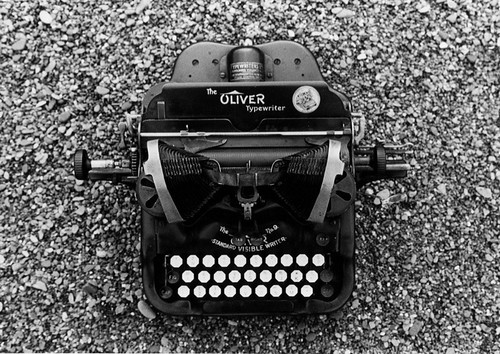Every family has its special staple cookie - the one that has to be made each year in the same fashion because it won't be made at any other time of the year. Cookies were an escape, a wonderful, creative distraction from the terrible weather, wet or dry, that characterizes Nebraska's bleak winters, mid- and late. Without cookies, I somehow believed, Christmas wouldn't really come.
We made spritz cookies and almond bark-pretzel-m&ms cookies. The latter isn't really a cookie, but they were special. Circle pretzels, with almond bark poured in and red and green M&Ms in the middle. Before I was old enough to melt the almond bark myself, I remember watching Mom or Dad pour it into pretzels - there was something magic in watching the white sugary stuff fall from the spoon - pure liquid white. As a child with a particular penchant for all things sugar and chocolate, this was a beautiful ceremony. Still is, actually.
We did not make sugar cookies often. I know we had the cookie cutters - stars and Santa Claus and Christmas trees - but they sat in a jumble in the kitchen drawer while Mom got out the old spritz cookie press and made a dough of flour and sugar and butter (three sticks), vanilla and almond extract: the aroma of the season. I still have the old press. Most of the parts are metal, and the thing is most likely twenty-five years old or older. It's finicky, and falls apart easily. I have a brand new plastic press that works like a dream, the latest in cookie press technology, but...
"Haven't you thrown that old thing out yet?" Mom will probably ask when I visit for Christmas. Well, no. So much of my childhood is wrapped around this device, so many hours of watching her labor over a cookie sheet, pulling deformed blobs of proto-cookie off the sheet and begrudgingly throwing it back into the dough bowl. She'd work until the pan was full of trees and stars and wreaths. Then my sister and I would descend with the colored sugar and the red-hots. The old press doesn't make the cookies easy, but it did make it Christmas. In the days when I imagined Santa dropping into our mantle-less house (we did have a chimney, but no fireplace), we always made sure there were spritz cookies waiting for him.
 | |||
| The don't make them like they used to. |
 |
| I'm thinking that this box might make an awesome handmade cover for a cook book. |
Mom eventually stopped making the spritz cookies. You can't really blame her. They're difficult to make and time consuming. They're mostly butter and sugar, and are small enough that a handful are eaten at a time - the antithesis of a healthy diet. But. It's Christmas.
The spritz cookies would always ALWAYS go into the same blue tin. Every year. My parents tried to get rid of it years ago, but I took it with me because... well, my mouth waters and I sniff for that almond extract and vanilla smell every time I lay eyes on it. Rest assured it has been washed several times since the '90s, but it is still "the" tin. I was a kid listening to Grampy's Christmas tape, Julie Andrews was singing "Jingle Bells", and there was spritz cookie dough in my mouth (ah, the BEST dough EVER) and imagining the horse was really pulling that sleigh all the way around the tin.
What I appreciate about the cookies now is how easy they are to freeze and to give as gifts. They go great with tea. They're pretty and colorful without a thick smothering of icing. They're bite sized (in some cases). They smell heavenly. Even as I make them now, I feel like that little kid aching for a taste of the dough, eager to mold it in my hands. There is nothing quite like spritz cookie dough getting soft and buttery between in the fingers. And as a writer, I find I need to cookie - do something purely tactile and savory - to get my brain working. Kneading bread dough, chopping potatoes, simmering wine, decorating cookies so that they look like snowflakes - it all creates room in the brain for those stories to grow, to simmer.
The best Christmas gifts involve food and drink and sharing it with others. Back in September I thought I should write stories and give them to people this Christmas. That didn't happen. Little stories aren't easy for me, and with the double stress of a trip to England in the first part of the month and a move sometime in the near future I turned to the simpler plan of cookies and puddings. I'm glad I did. These treats help us face the long dark of another winter of resolutions failed and met, of more snow and shivering and dying car batteries.
This winter I'll be back to getting those query letters out to potential agents. I'll be looking for my first solo apartment. I'll be writing a sequel to my novel and dabbling in the revamp of another. I'll also have a few spritz with my tea, while my supply lasts.
And who knows? I might make more for St Valentine's Day.



































